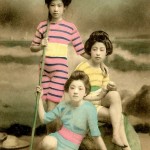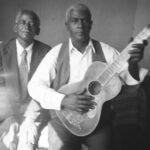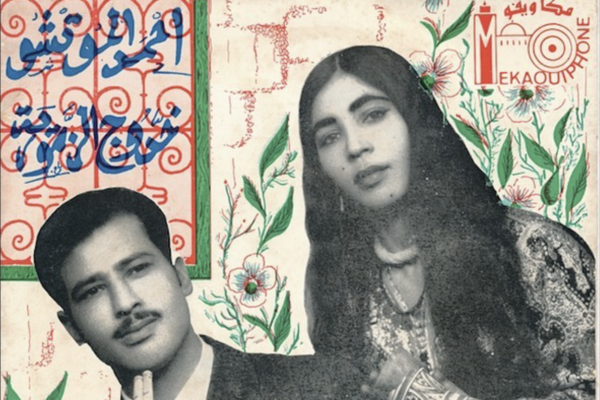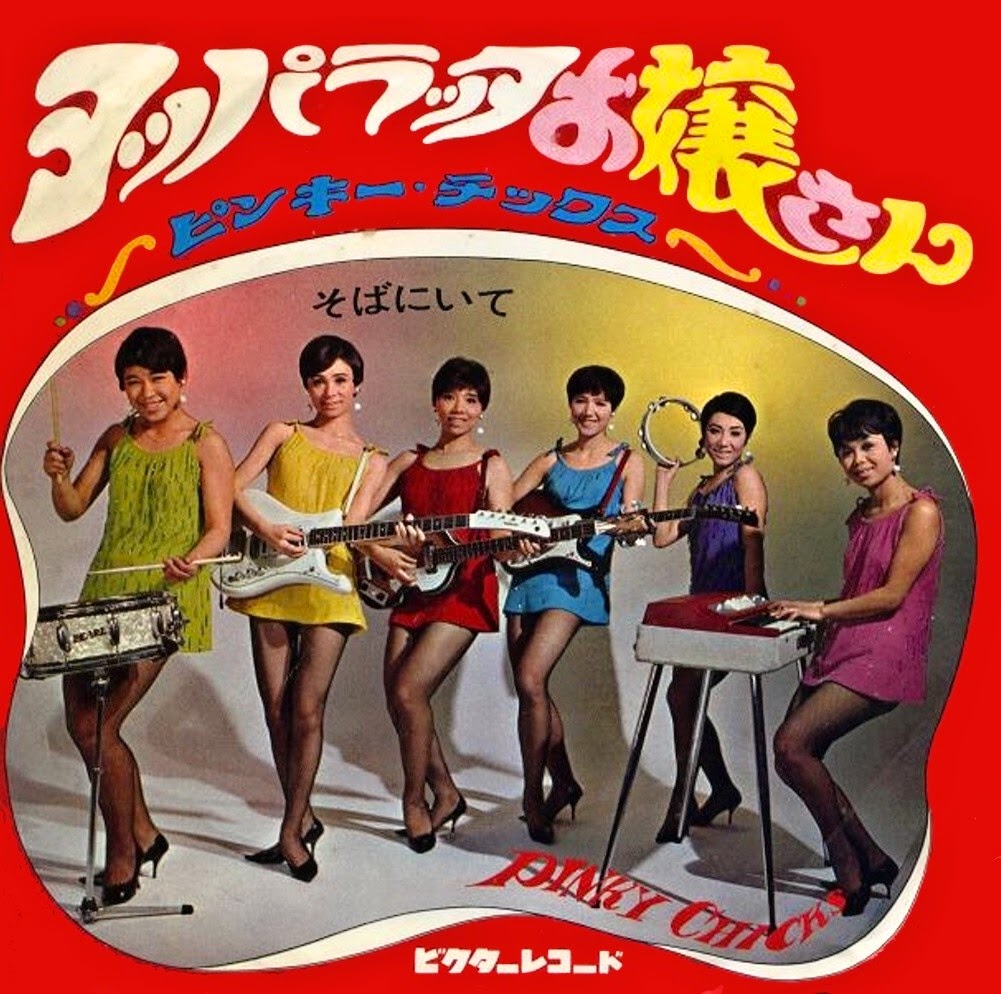
When the Beatles arrived in Japan in June of 1966, they caused as much pandemonium when they did when they triggered Beatlemania in the United States in 1964. A total of 8,400 policemen were mobilized for security at a cost of 90 million yen and more than 6,500 Japanese teenagers were taken into custody. They had been in Japan for 102 hours (and were paid 60 million yen).

Japan had its very own ‘beat era’ during the 1960s that was heavily influenced by the Beatles, the Rolling Stones, American hit music and psychedelic rock. It spawned an entirely new music genre known as ‘Group Sounds’ (GS), which saw over a hundred bands release vinyl records on major labels that imitated Western rock musicians. More than often, Group Sounds records did covers of the supergroups such as The Beatles, The Beegees and The Rolling Stones, translating the lyrics into Japanese. But the colourful, outfit co-ordinated bands also recorded their own Western-inspired moody ballads and syrupy pop songs. Some of it was not so good, but some of it was pretty groovy stuff with an added exotic edge of being sung in Japanese.
Sample the sounds of the Pinky Chicks here.
Norihiko Hashida and the Shoebelts
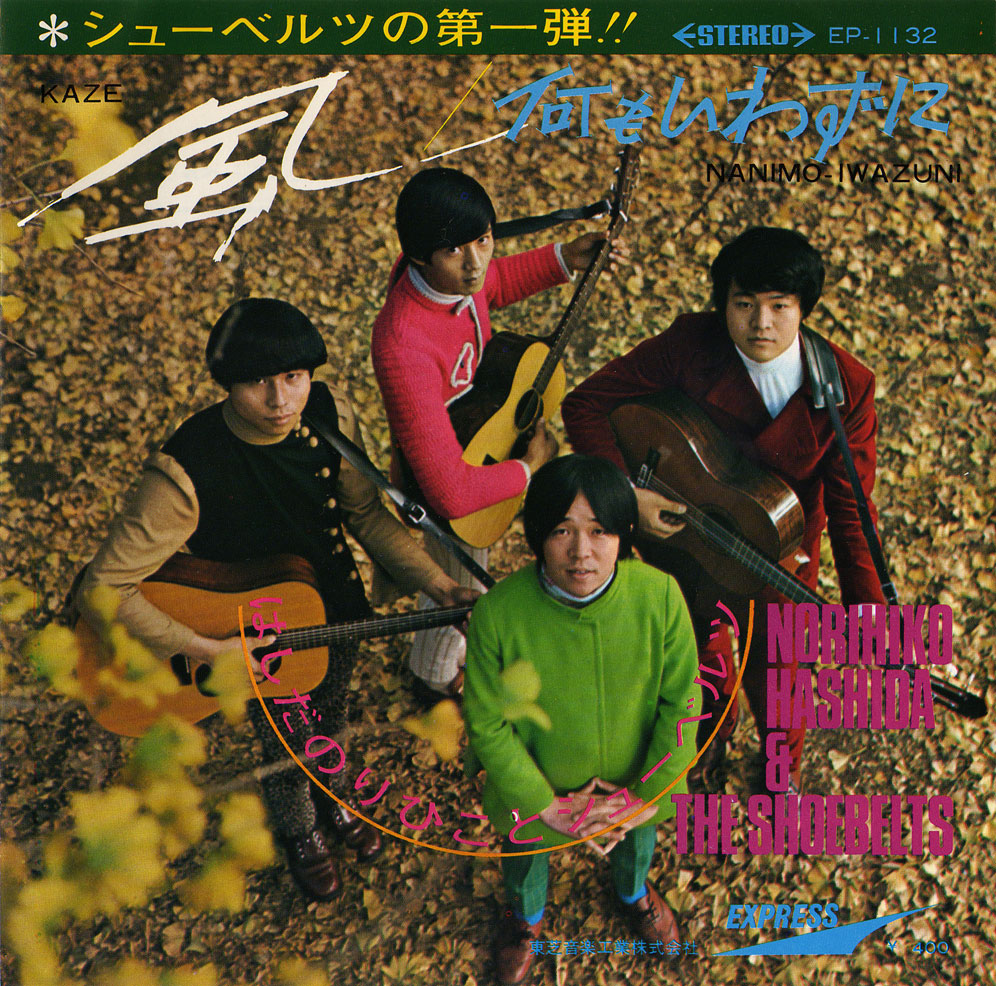
The best part about this is trying to imagine what exactly a shoe belt would look like.
Most Japanese musicians felt that they could not sing rock in Japanese. There were debates between bands over whether they should be singing in English or Japanese and the confrontation became known as the “Japanese-language rock controversy”. It was decided that Japanese rock music should be sung in Japanese which likely spawned the origins of modern J-Pop.
The Spiders
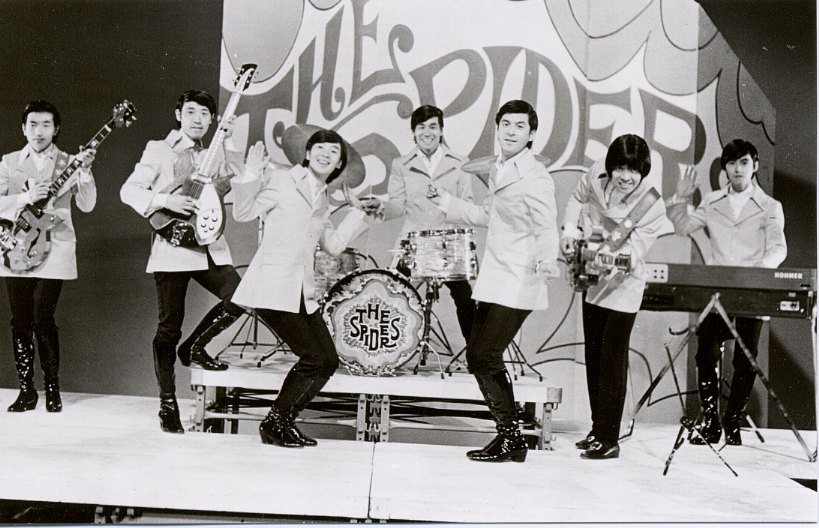
The Spiders played some original songs along with lots of the Beatles and Animals covers. Sometimes, the audience shouted, “Go home imitators!”, and when the Beatles came to Tokyo in ’66 and offered them the opening act slot, the band refused it. Unfortunately, as long as they were signed to their labels, they continued to play cover songs on their record which were sold at budget prices. The GS era record companies didn’t really care who played the songs, they just needed musicians who could play a decent cover.
Lind and the Linders
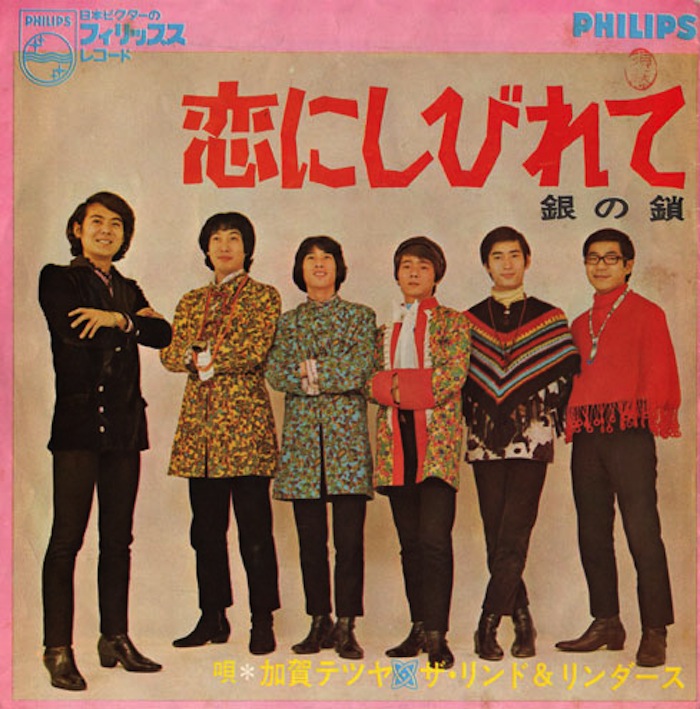
The Group Sounds scene was largely contrived, commercialized, and possibly controlled to the point of absurdity. Record companies wouldn’t let bands associate with other bands. This group’s most successful record was called “I Dig Rock and Roll Music”, a mildly psychedelic tribute to Donovan, the Mamas and Papas and the Beatles.
The Jacks
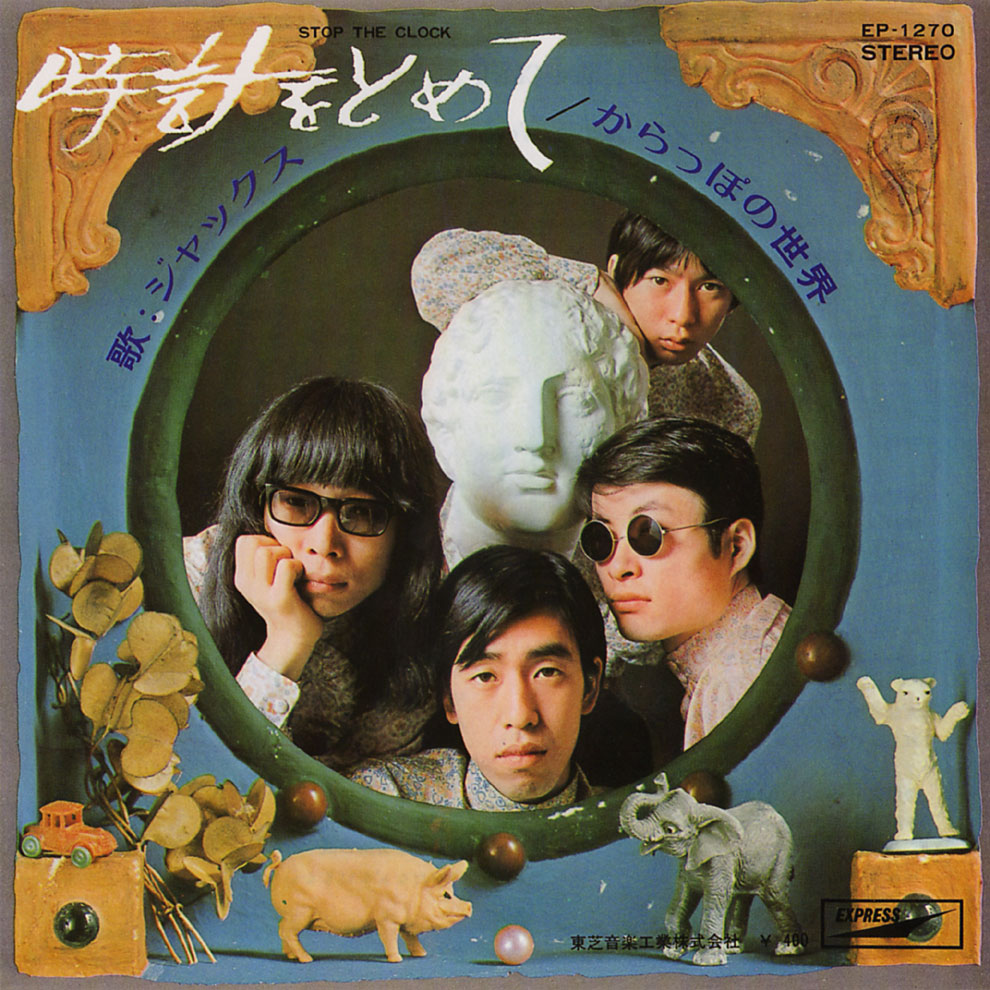
Those searching for authenticity had to look underground or overseas. The Jacks were seen as an outsider group in Japanese music, too original to fit under the Group Sounds moniker of the times. Their music was often slow, dramatic and morbid, and pioneered a Japanese folk-rock movement of the late ’60s that was partly a reaction against Group Sounds. While the authorities preferred the subdued music, by 1968, the record-buying public was looking for ‘authenticity’ and more complex lyrics, but as a commercial genre however, folk-rock seems to have been short-lived. It appears Jacks’ peak creativity came in 1967 and early ’68
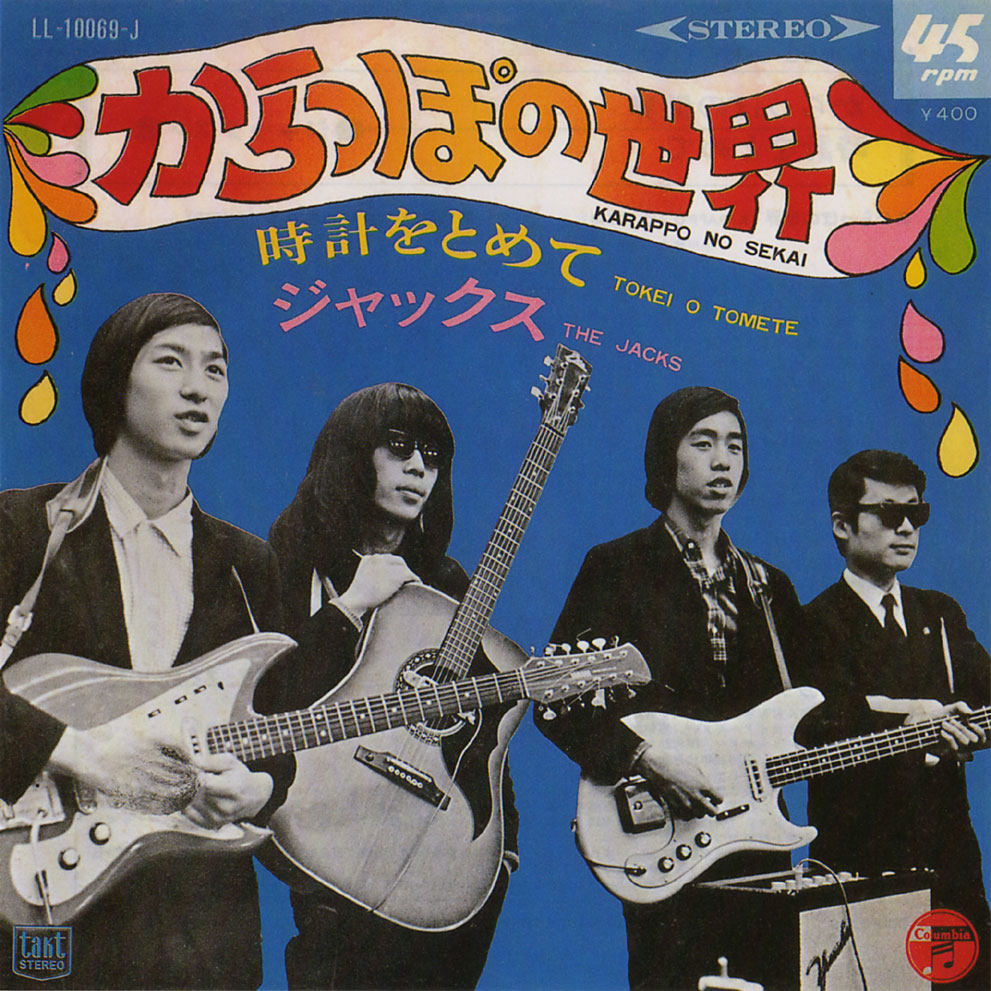
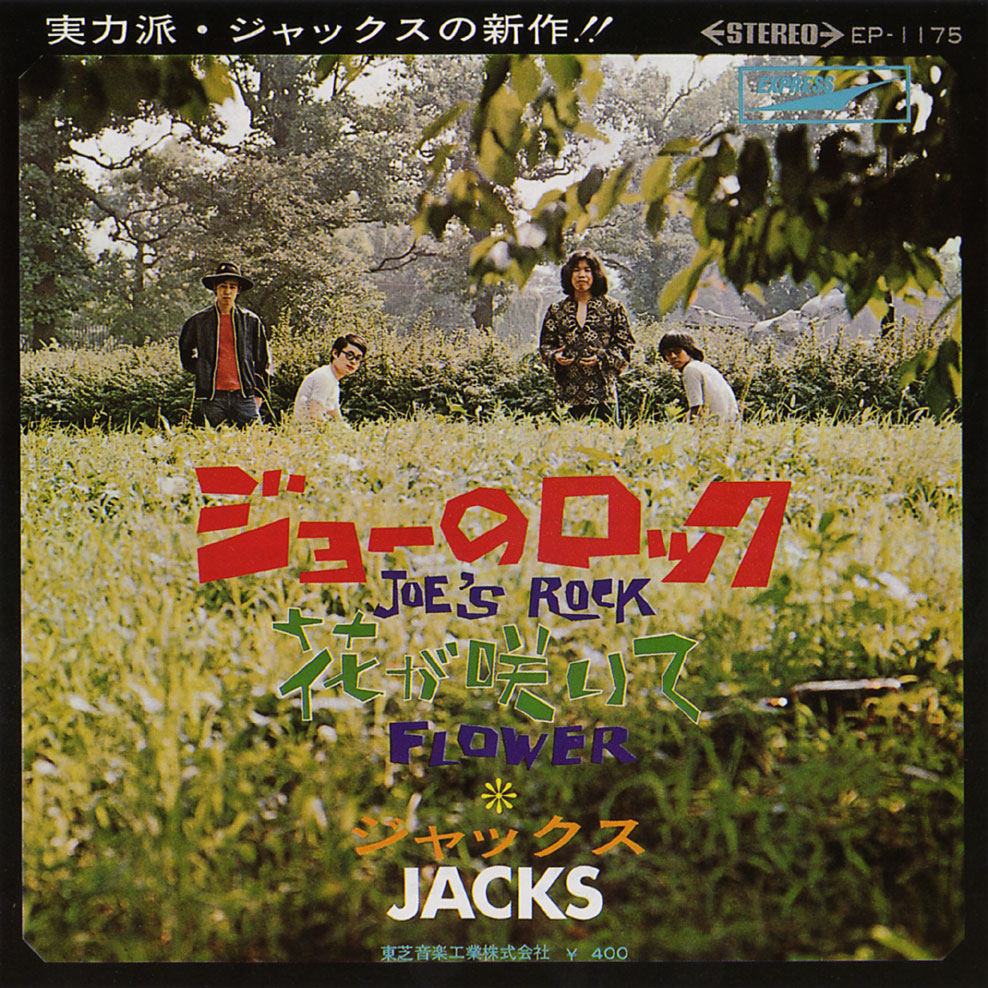
Chou à la Créme
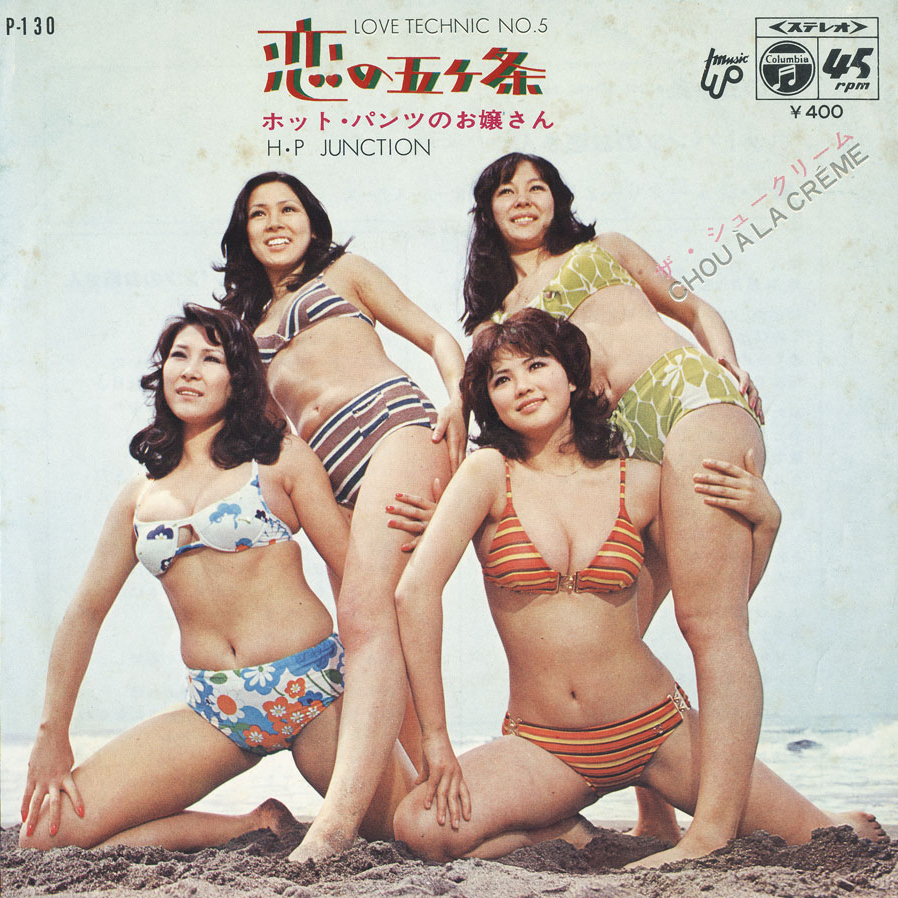
I couldn’t find out much about this girl group, only that they were called, rather fabulously, Chou à la Créme.
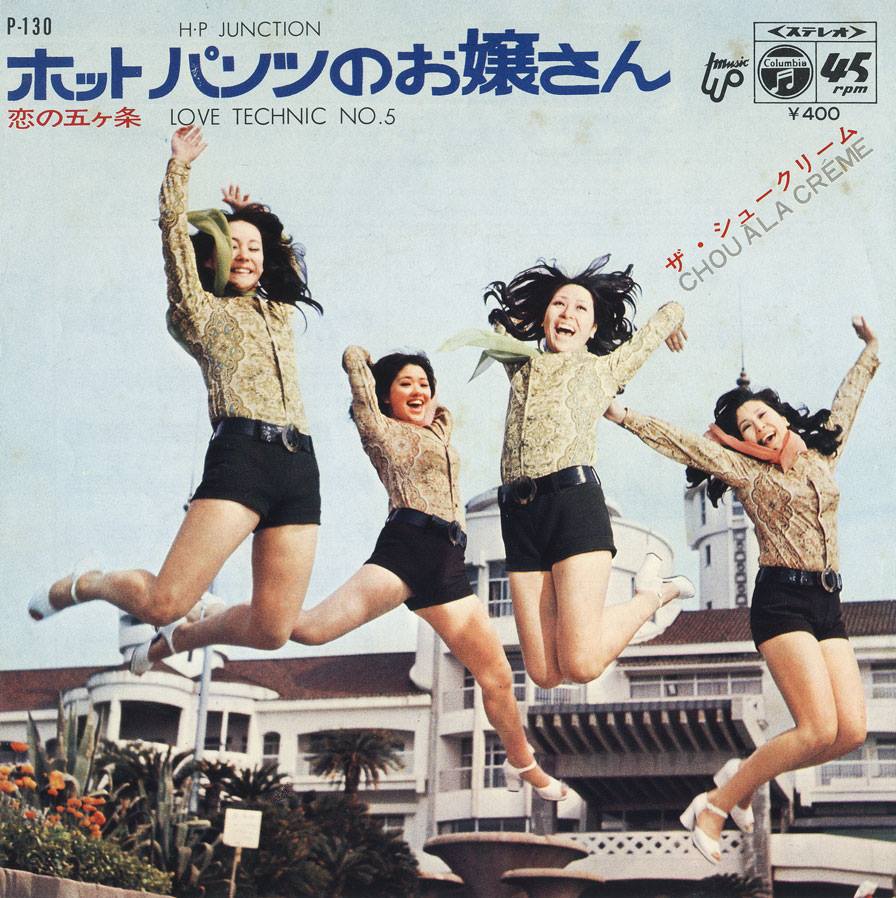
The Dynamites
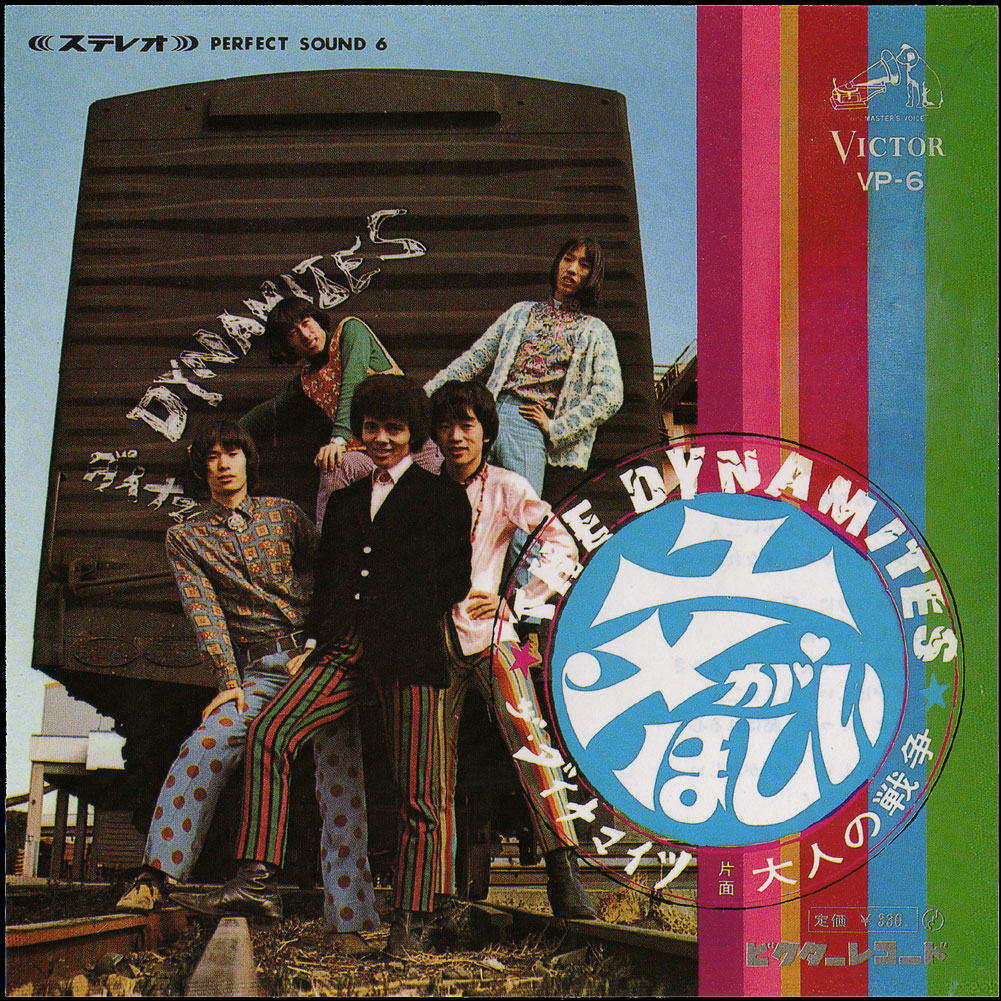
The Dynamites came out of the Tokyo club scene, calling themselves the Monsters before having to change their name when they got a record deal. They had a pretty fine original number called “Tunnel to Heaven“, but unfortunately, like most GS bands, their LP is chock full of poorly chosen cover songs like “My Girl” and the Bee Gees’ “Massachusetts”.
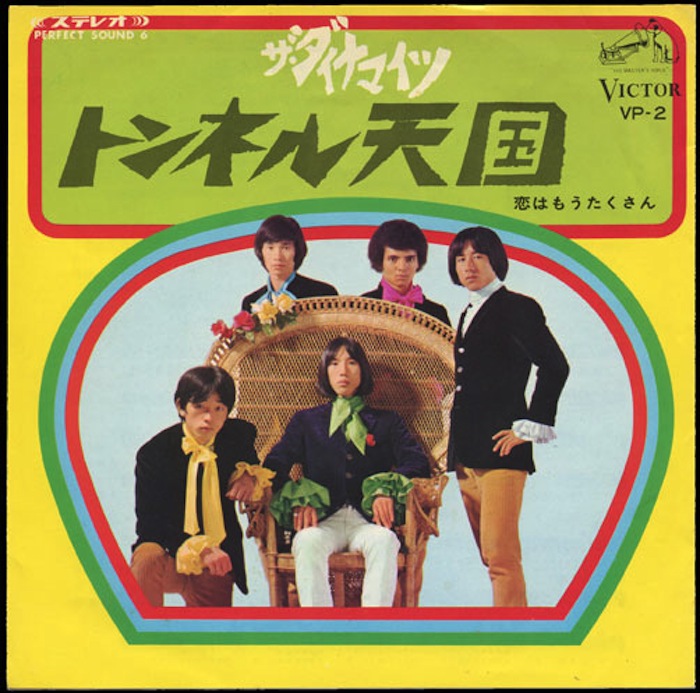
The Mops
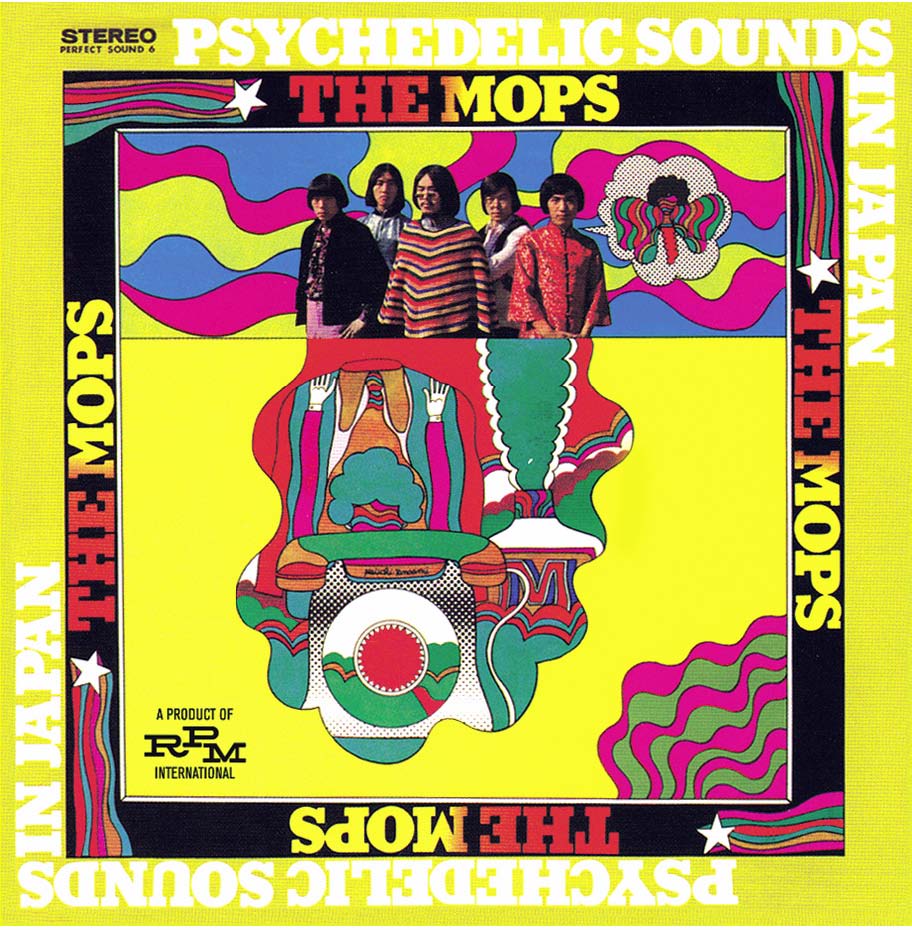
In his book Japrocksampler, Julian Cope said that Tokyo’s The Mops made “some of the most urgently deranged and euphorically disruptive music of the entire Group Sounds era.” Compared to other Japanese bands of the period The Mops were “too weird, too punk, too ugly.”
The Golden Cups
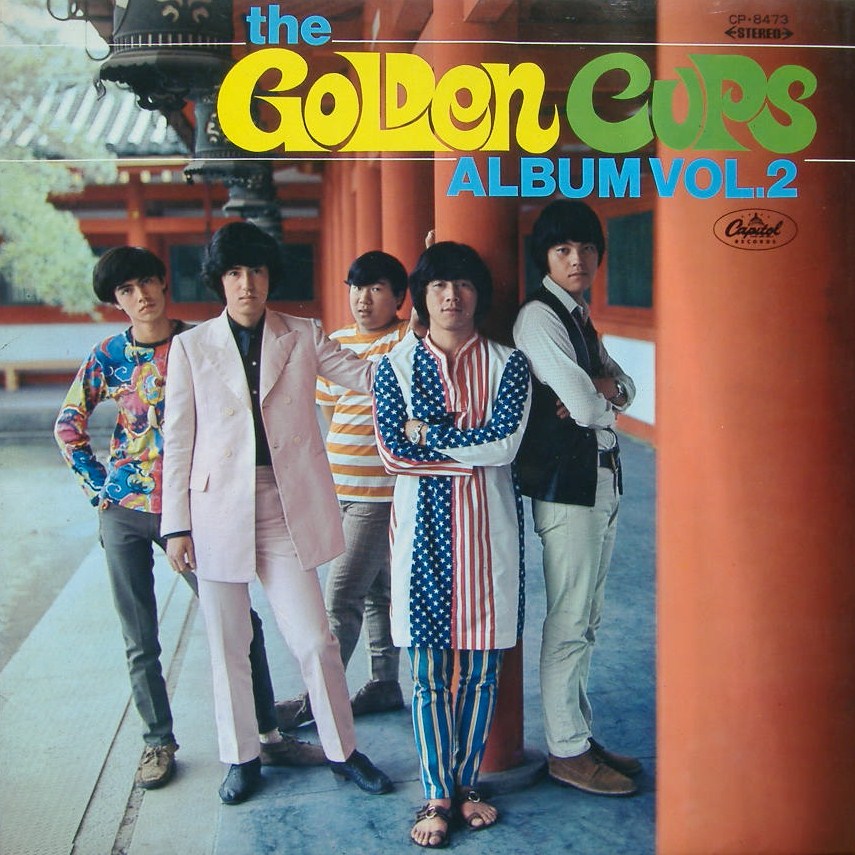
One of the top performing Japanese bands of the 1960s, but mostly, I just love this American kaftan (and the little dude in the back).
Youth in Japan, 1964
And since we’re in a time-traveling mood, I thought it might be interesting to see what the music and youth culture of 1960s Japan really looked like, up close and personal. This is a feature shot by photographer Michael Rougier that may or may not have made it into a 1964 special Japan issue of LIFE magazine. Rougier attends a rock gig during the height of Japan’s beat era and takes us behind the colourfully contrived vinyl sleeves of Group Sounds and into the belly of the after dark music scene…
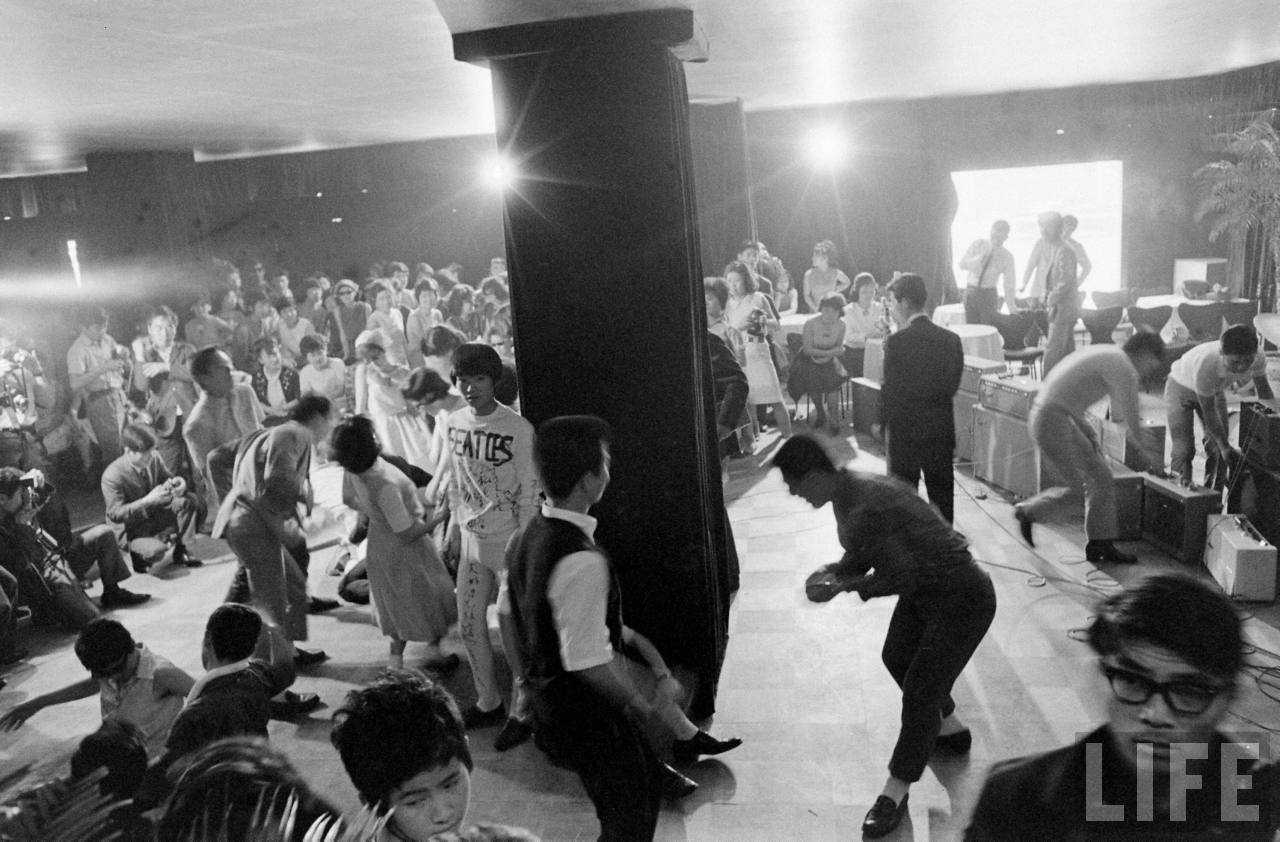
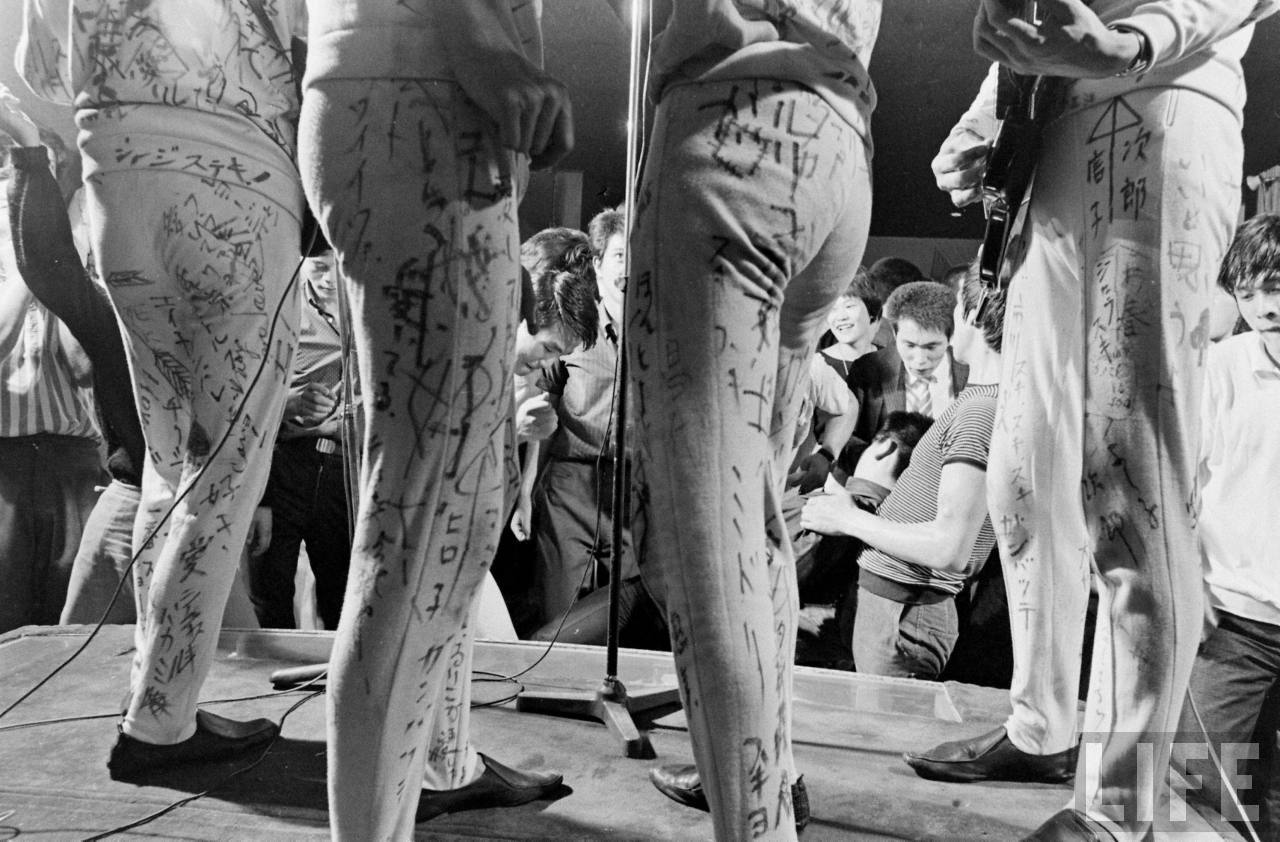
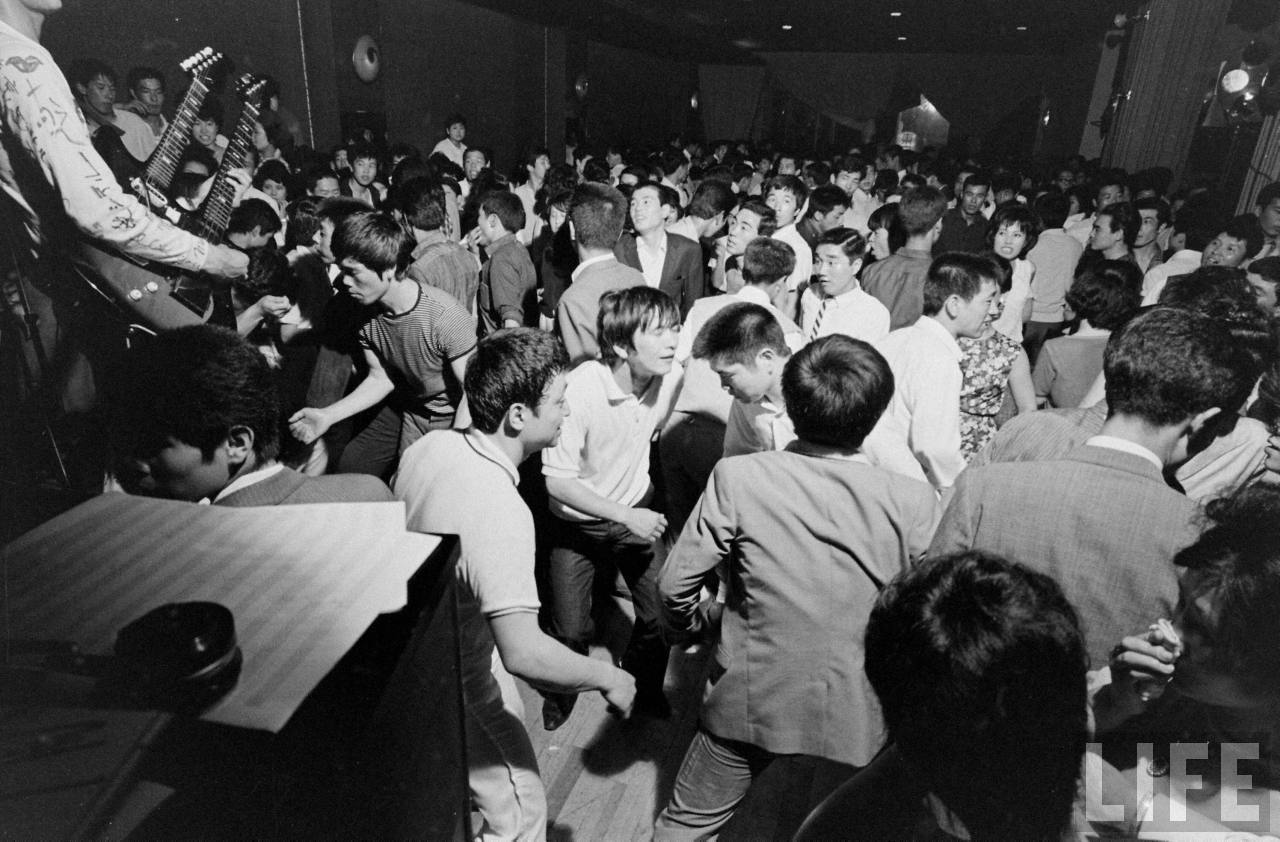
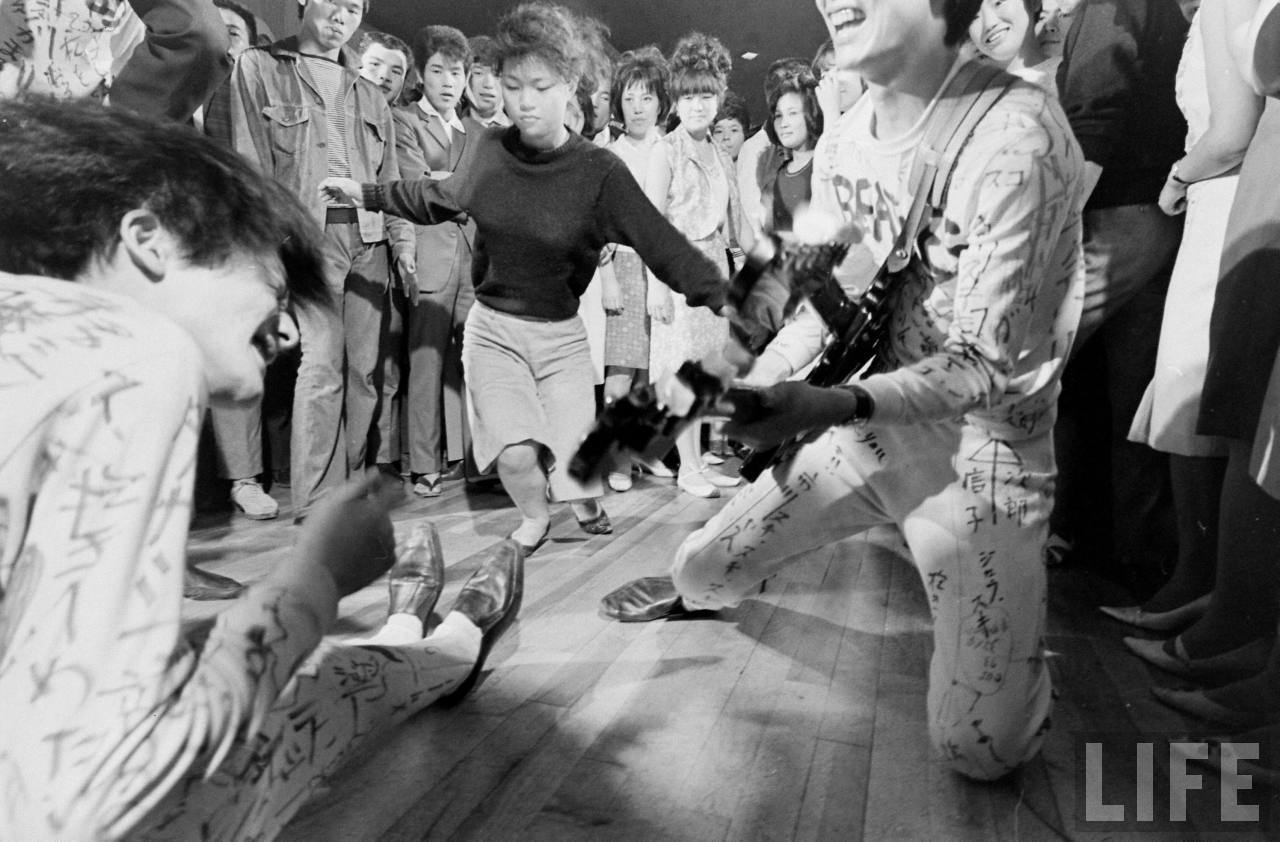
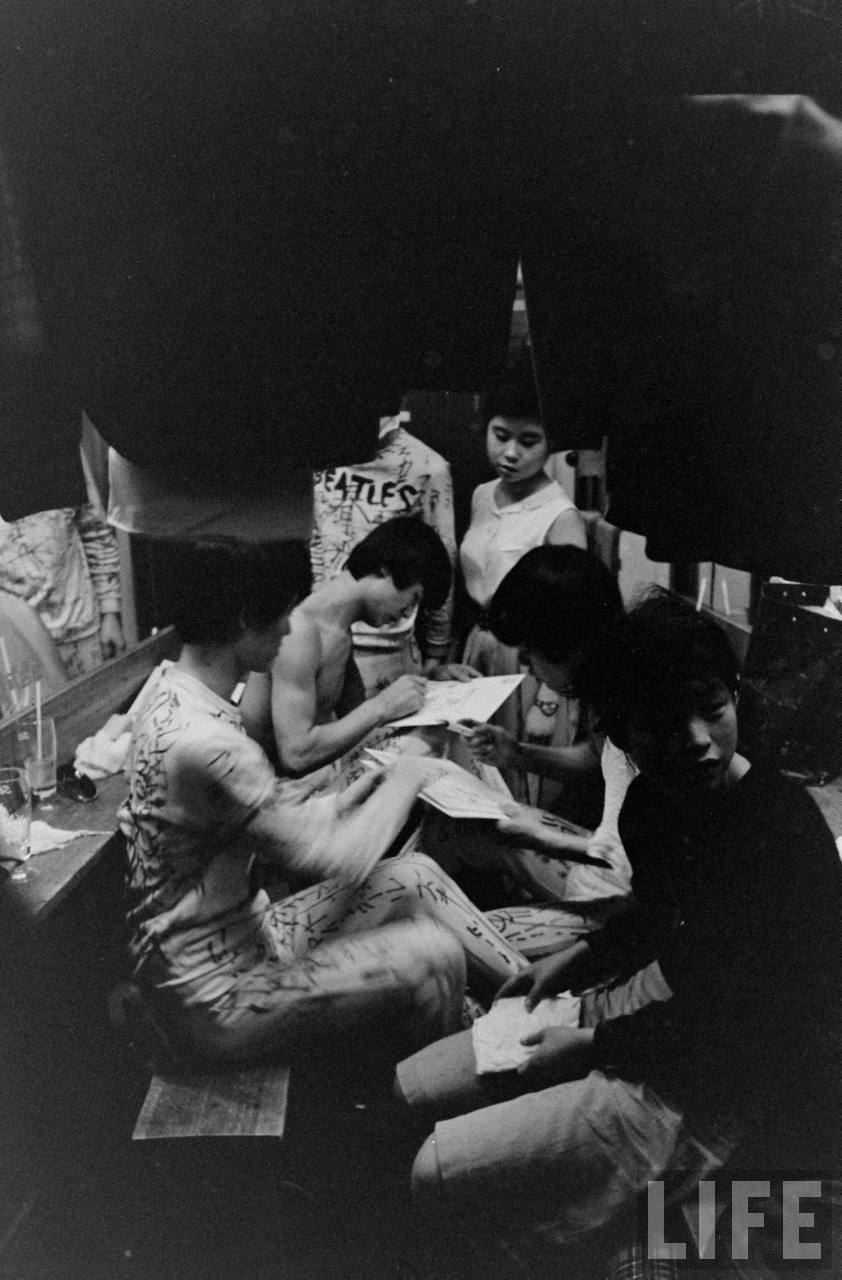
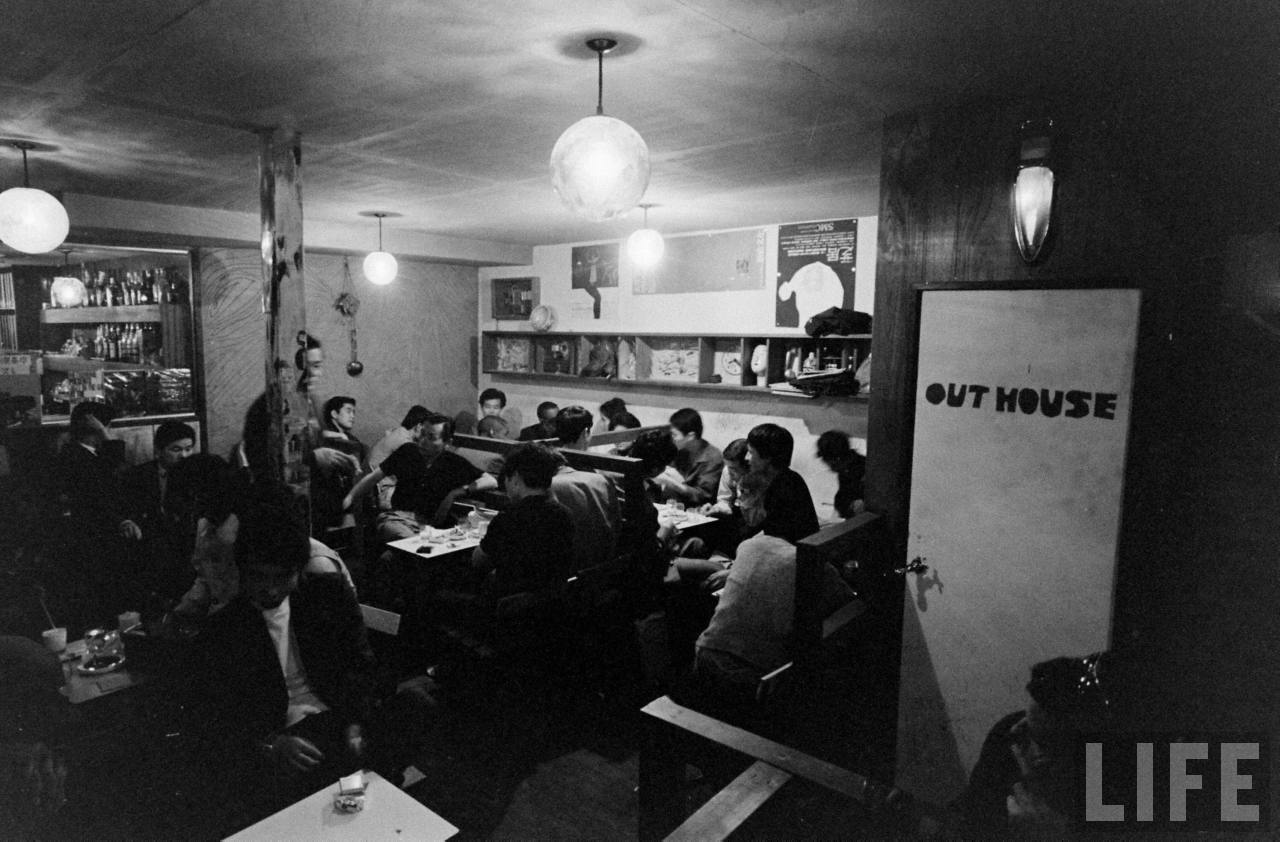
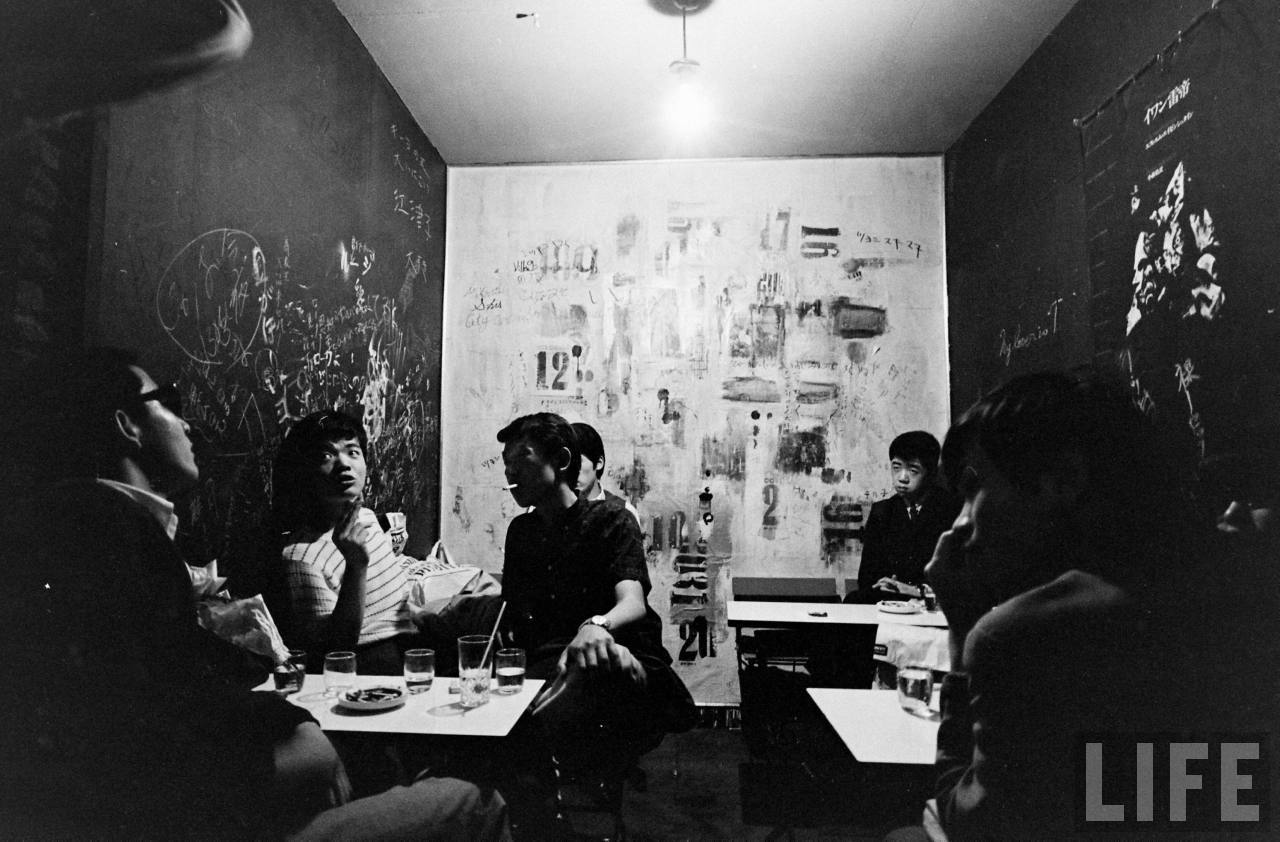
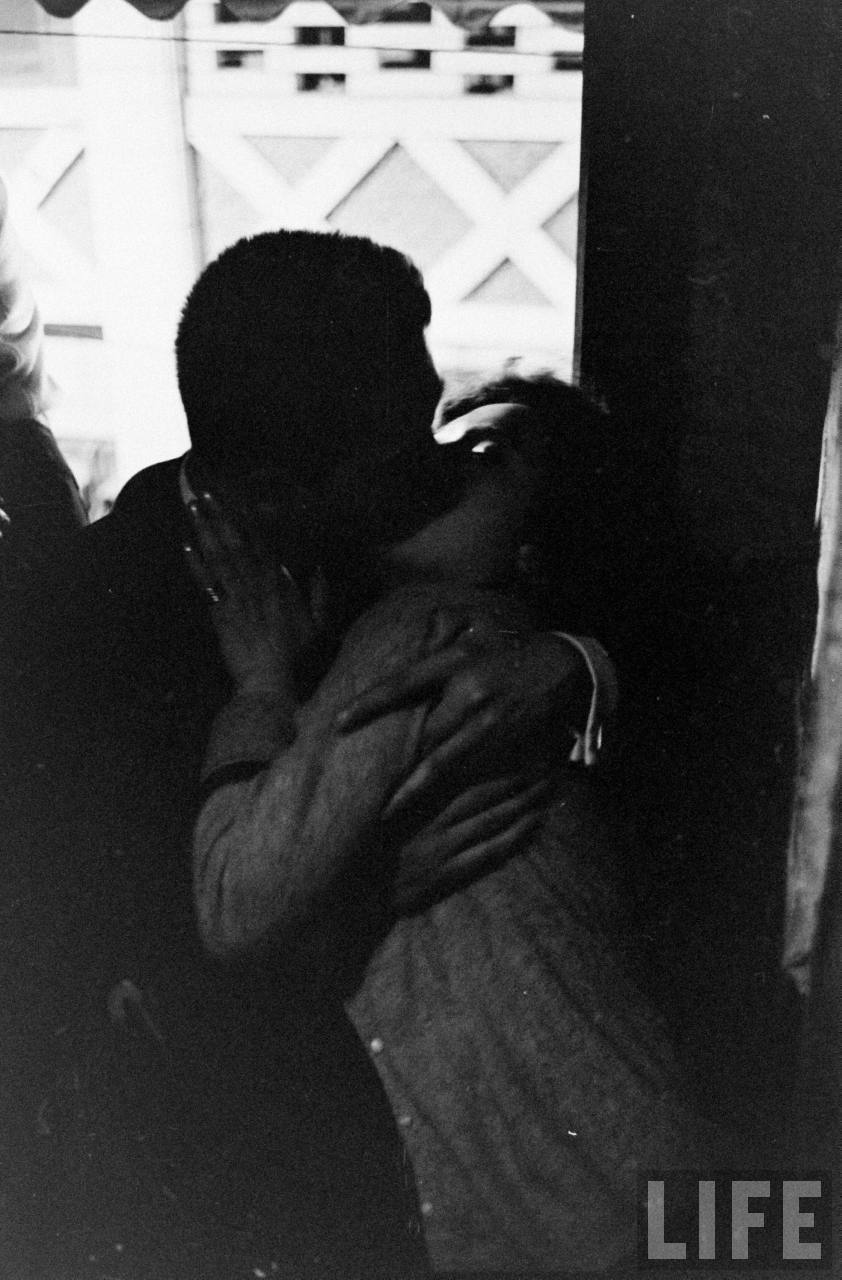
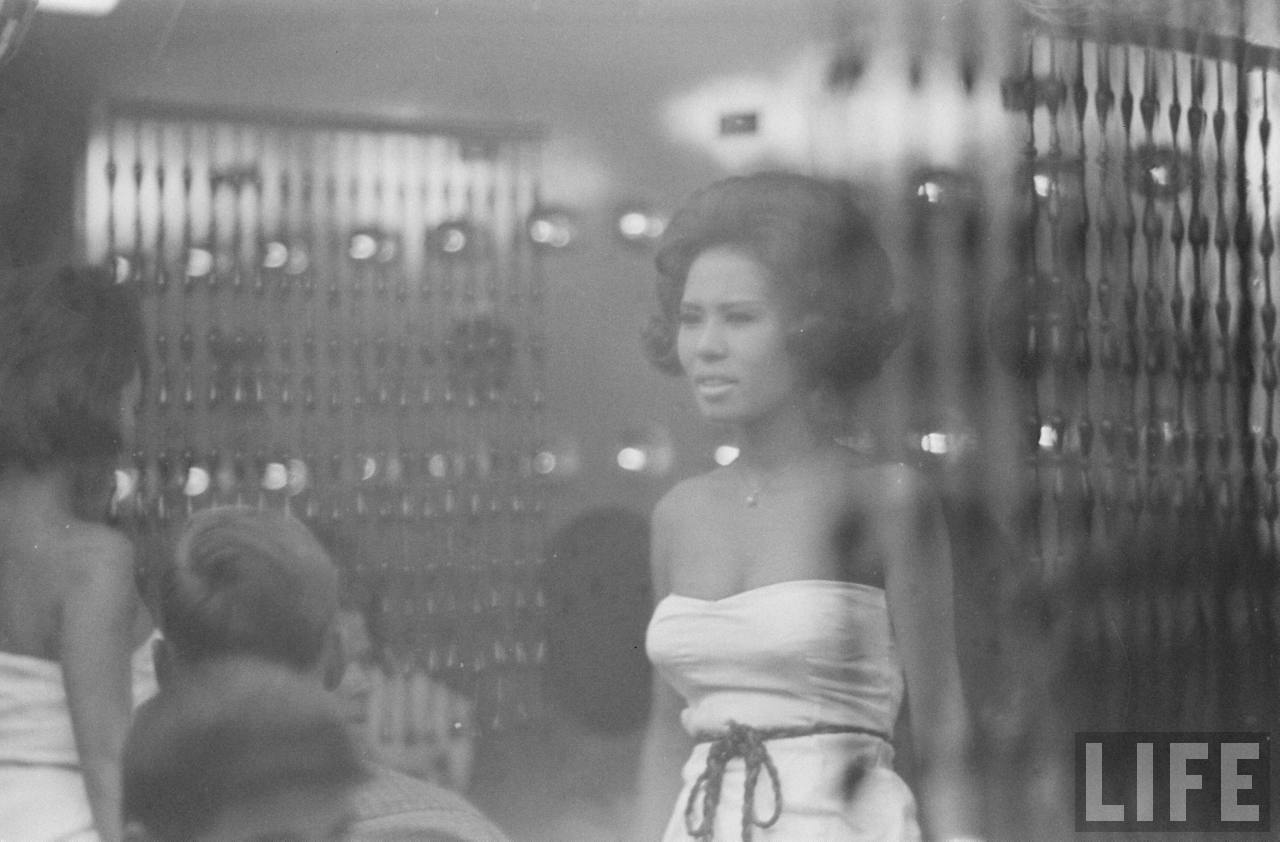
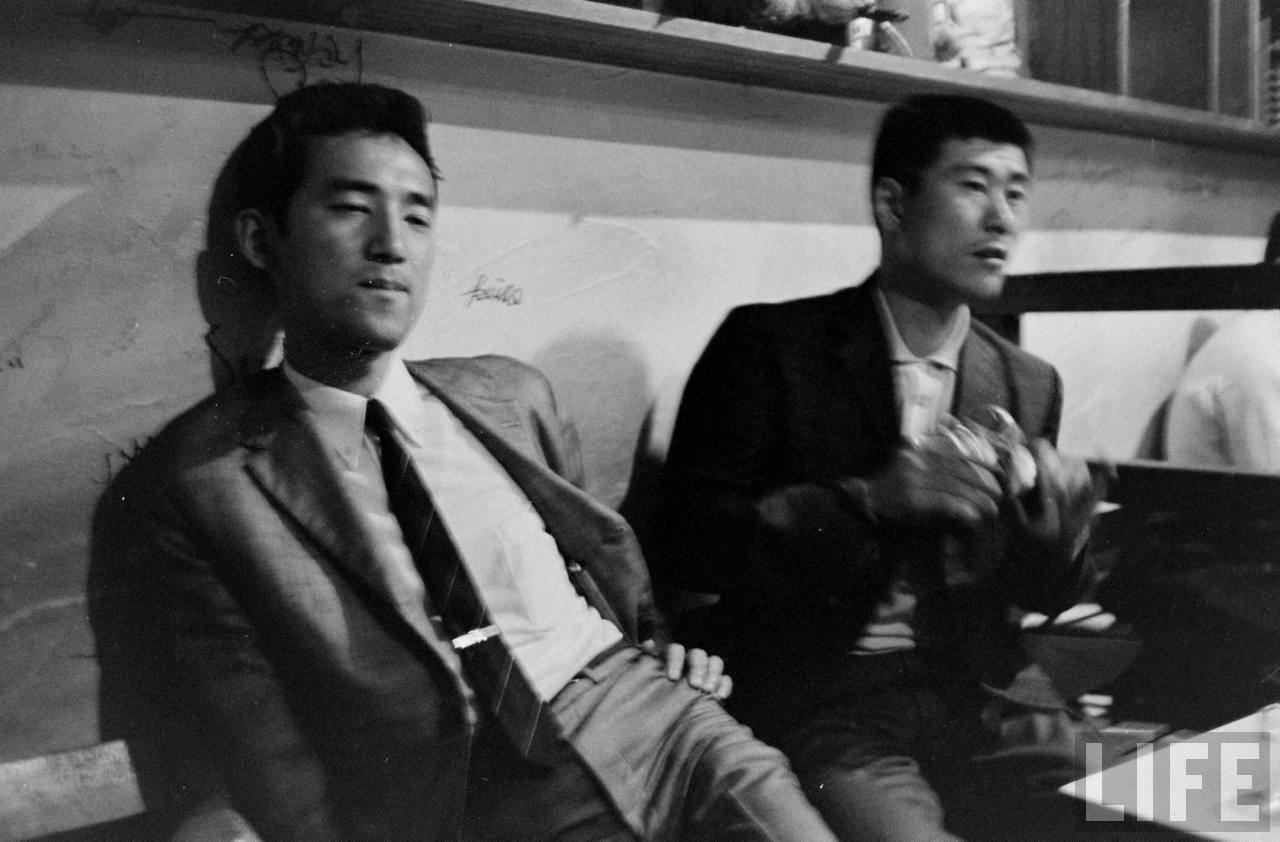
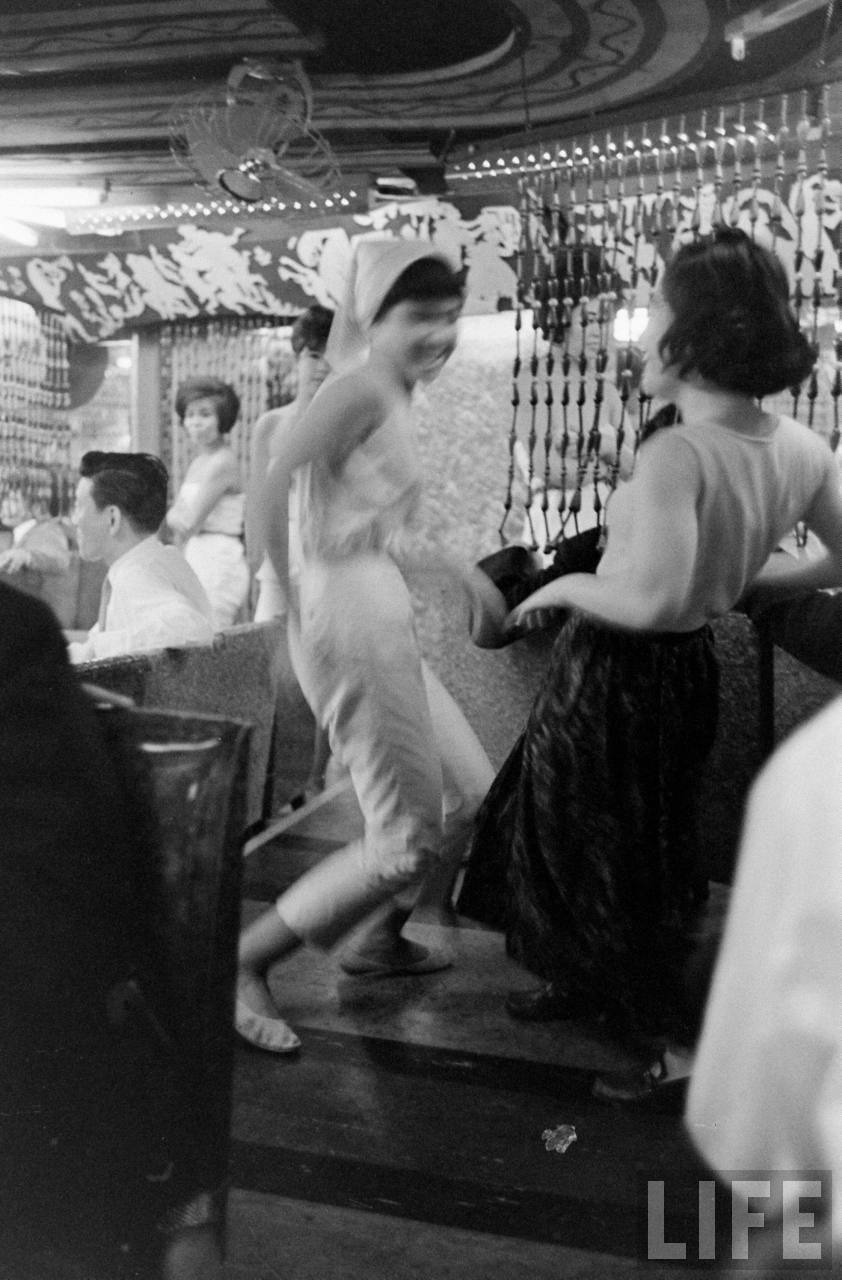
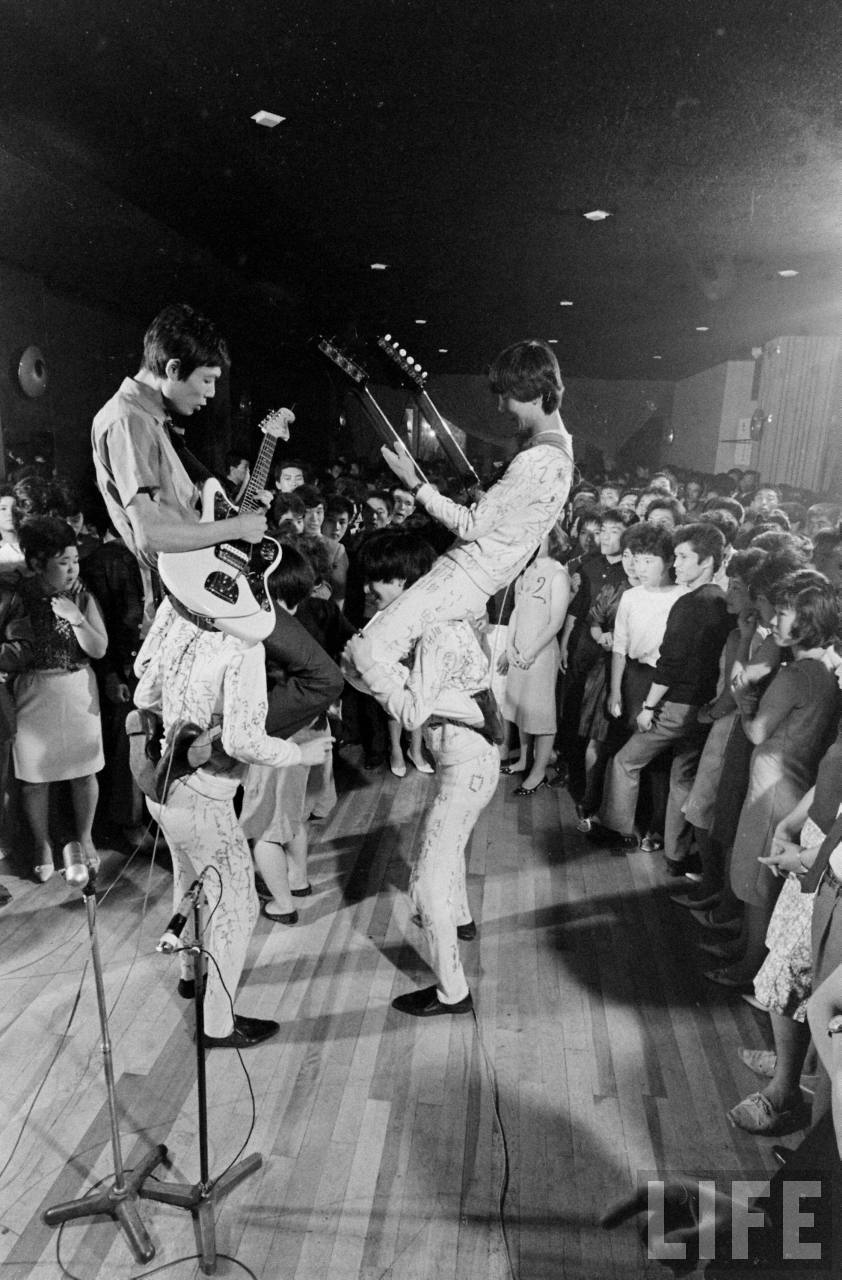
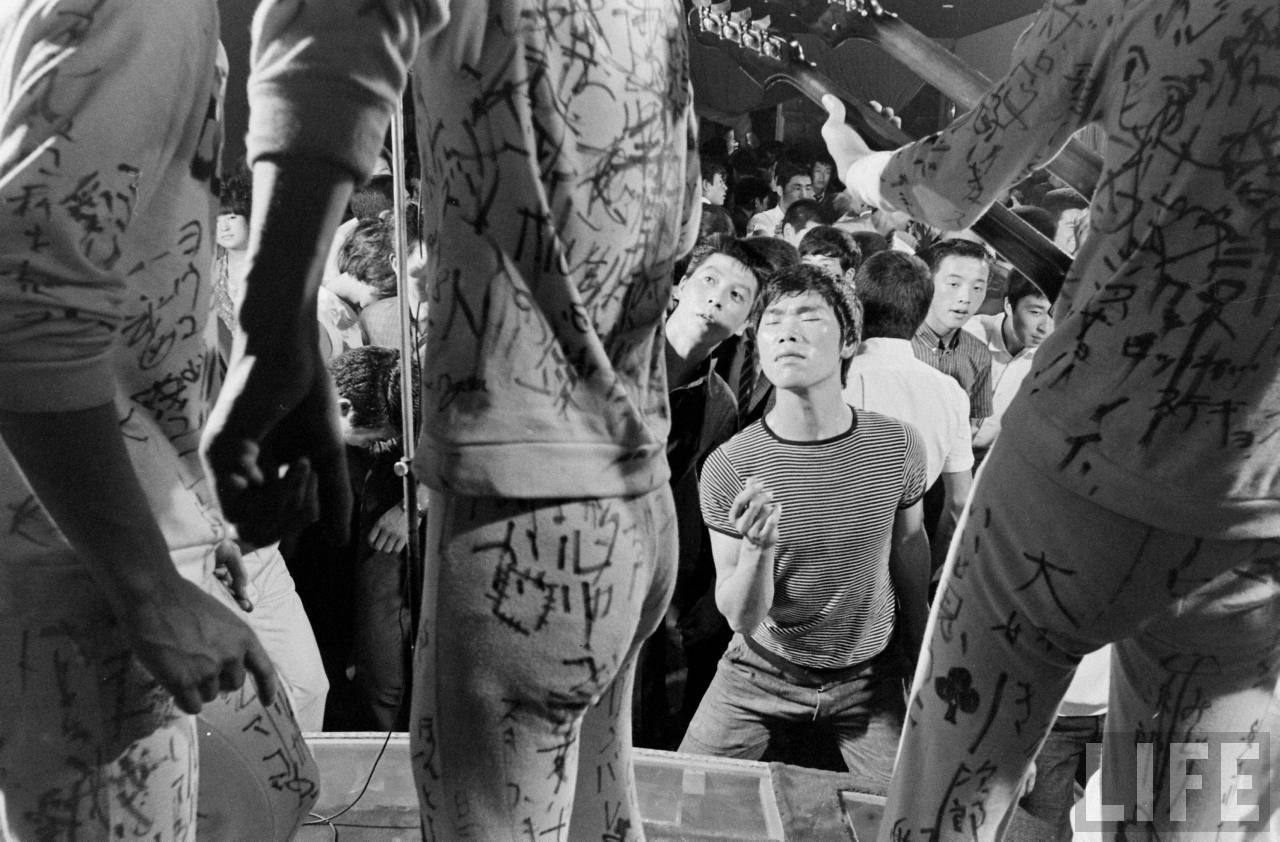
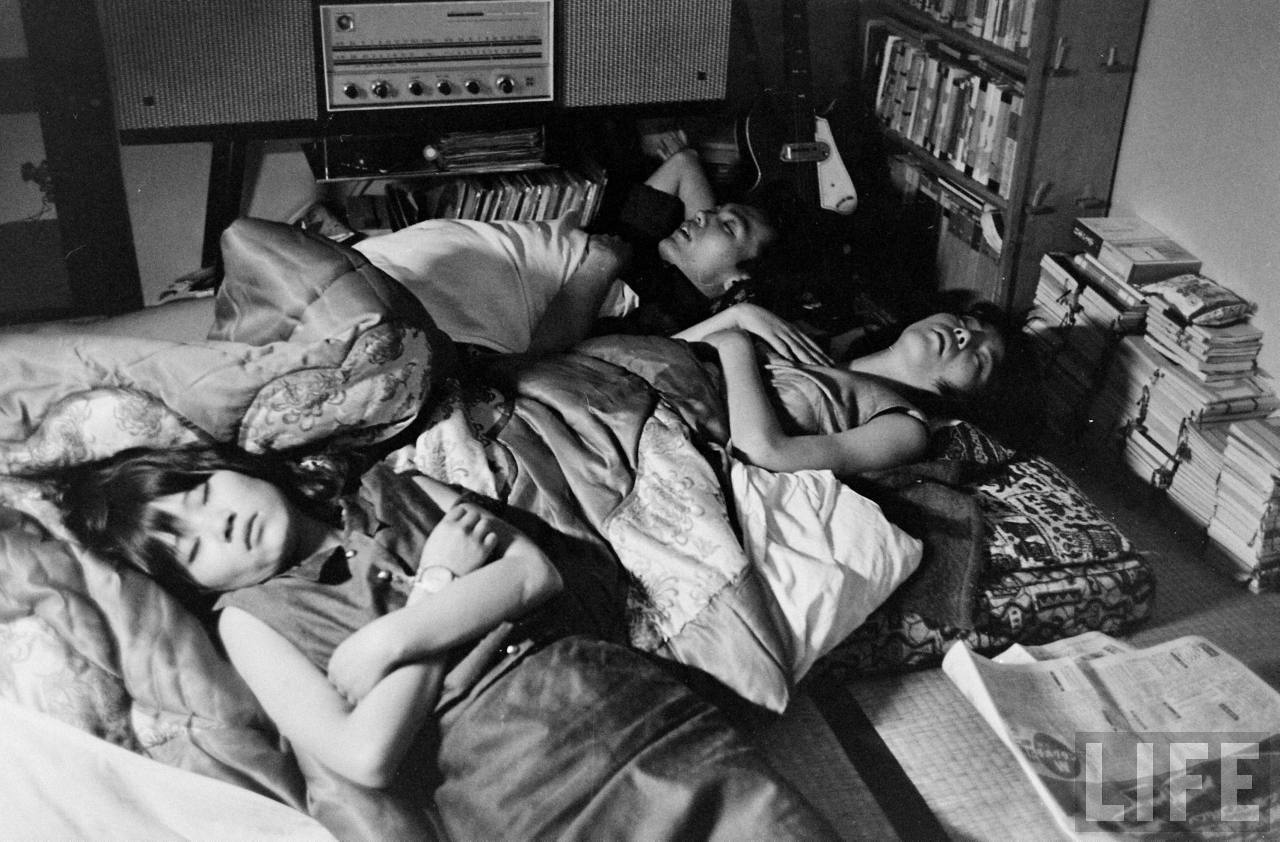
Sources LIFE, Garage Hangover


